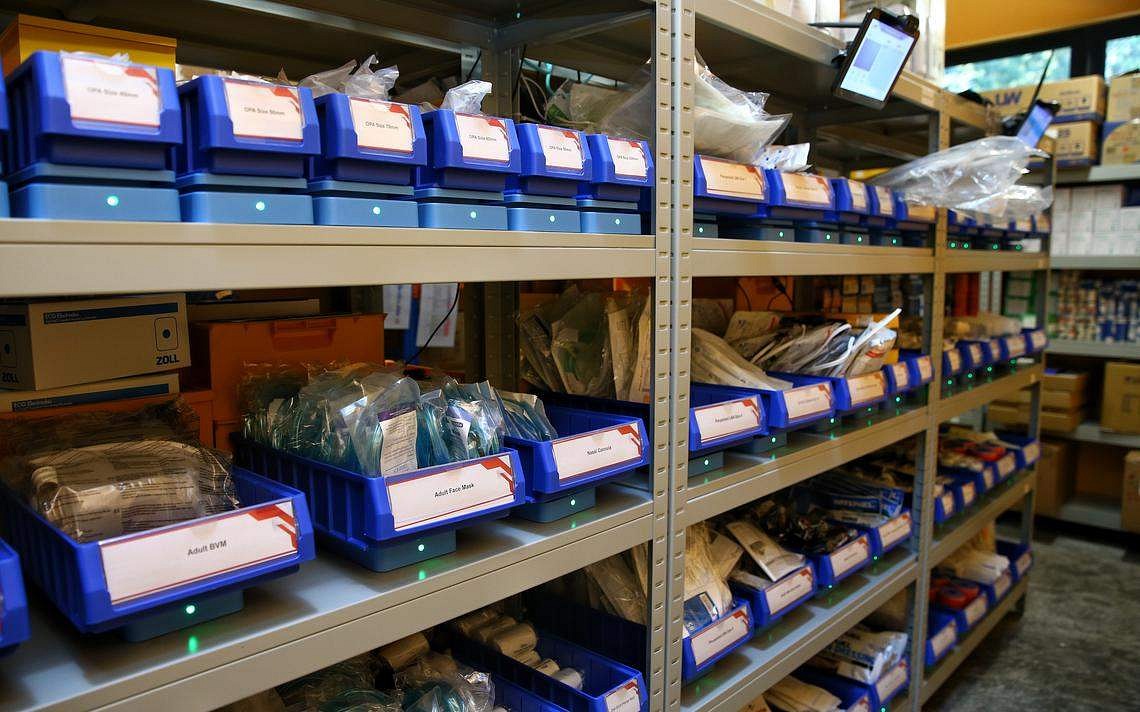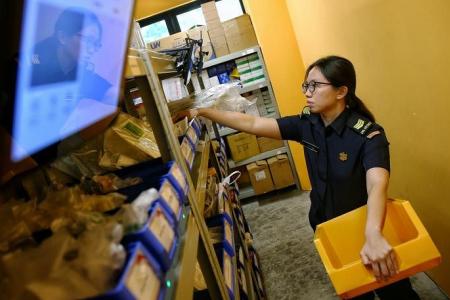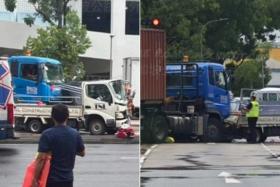New automated medical store to halve time taken for paramedics to restock ambulances
Sergeant (3) Alicia Chien has to manually update the inventory records at the medical store at Ang Mo Kio Fire Station every time she replenishes the supply in the ambulances. That takes up a lot of her time.
For paramedics like her, every second is valuable. For example, when she learnt of a cardiac arrest case that had to be attended to, she rushed to get two defibrillator pads and the other items from the store, leaving the manual updating of the inventory records for later.
Soon, however, paramedics such as Sgt3 Chien will be able to get the items they need more quickly – from an automated medical store. They can restock their ambulances after an incident without having to manually record the items they take, cutting down a process that currently takes 20 minutes on average to about 10 minutes.
The Home Team Science and Technology Agency (HTX) and the Singapore Civil Defence Force (SCDF) are testing out the automated medical store that uses a self-checkout system, and it is being trialled at Punggol Fire Station which is billed as Singapore’s first smart fire station.
HTX and SCDF said the concept for the medical store is similar to that being used in Amazon Go Stores’ Just Walk Out programme where customers enter a store, take what they want and leave without having to pay at the cashier. The bill is automatically charged to the customer’s account.
At the automated medical store, a weight sensor detects the change when an item is removed by the paramedic from the container and facial recognition technology is used to account for who has taken it.
The trial of the automated store at Punggol Fire Station is expected to run until February 2023 before the system is rolled out at all 23 fire stations in Singapore.
On Thursday at the Punggol Fire Station, Lieutenant-Colonel Shahdele Isman, who is SCDF’s team lead for the automated medical store, explained the difficulties paramedics face.
“The traditional pen and paper process is laborious and time-consuming,” he said. “It is often disrupted when paramedics are suddenly activated to turn out for emergency calls. The process is also prone to human errors like miscounting, illegible handwriting as well as inaccuracy in recording.”
LTC Shahdele, who is also the commander at Ang Mo Kio fire station, added: “The challenge that they face was particularly difficult during the height of the Covid-19 pandemic, when the ambulances faced call surges. So these are the driving factors that the team experienced that push them to leverage technology to automate certain processes, making it more effective and efficient in their daily operations.”
Mr Darren Ang, head of training and immersive systems of the civil defence programme management centre at HTX, said the technology currently used at the automated medical store may not be able to detect items that have negligible weight such as gauzes.
To address this, he said, certain items have either been repackaged into bundles or placed in containers.
LTC Shahdele said the technology in the new automated medical store will also allow the process of indenting fresh stocks of various items to be automatically triggered when stocks are low, instead of having an officer to do it manually.

It will also be an opportunity to introduce data analytics, as usage patterns of the different types of items across the various fire stations can be gleaned.
This can also mean stocking up on items that are needed at a station in an area with more senior citizens, for example, said LTC Shahdele.
He added that this could allow for adjustments seasonally too, like getting more inhalers in that station during the seasonal haze to assist more elderly people who might be affected by it.
Get The New Paper on your phone with the free TNP app. Download from the Apple App Store or Google Play Store now


